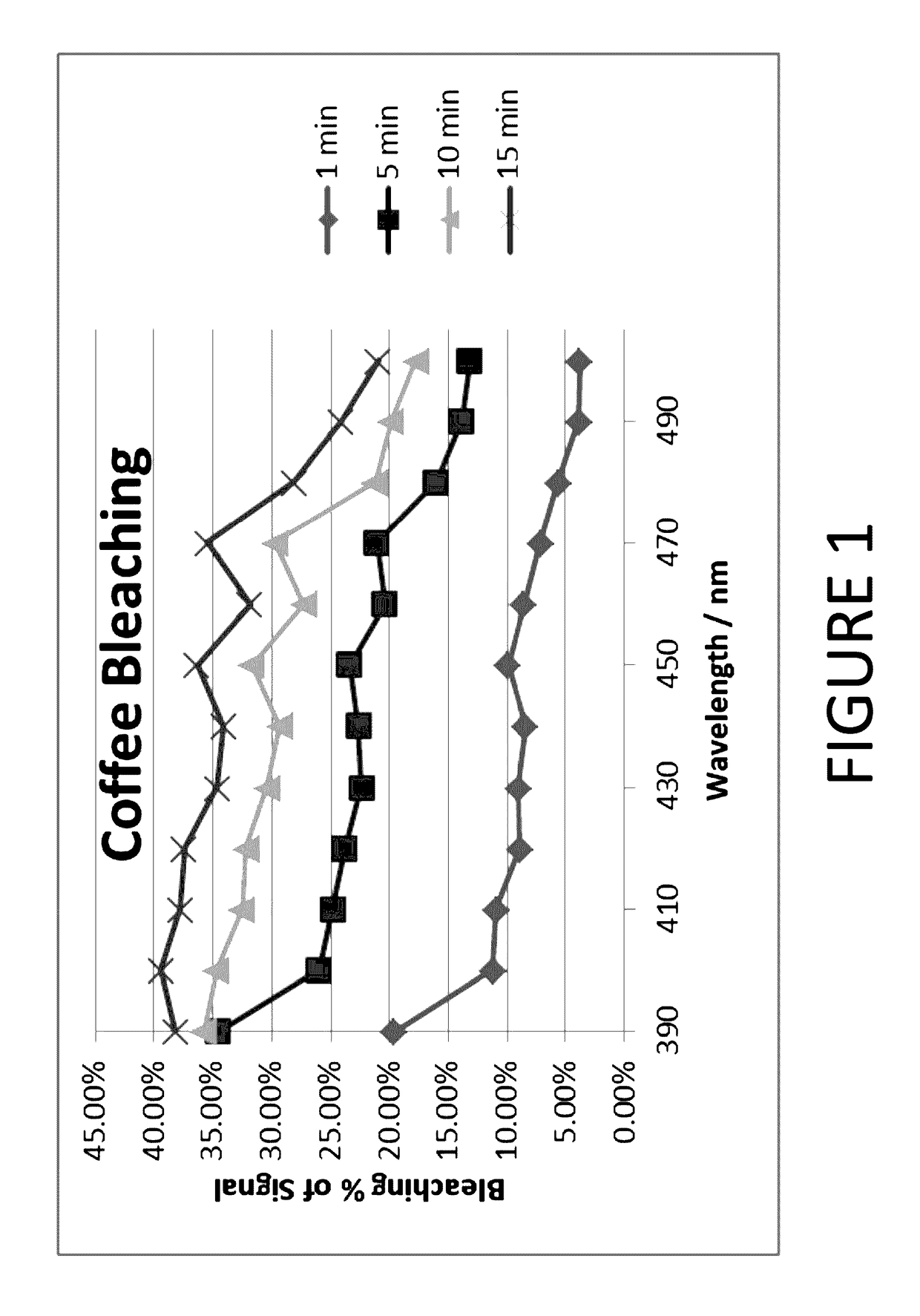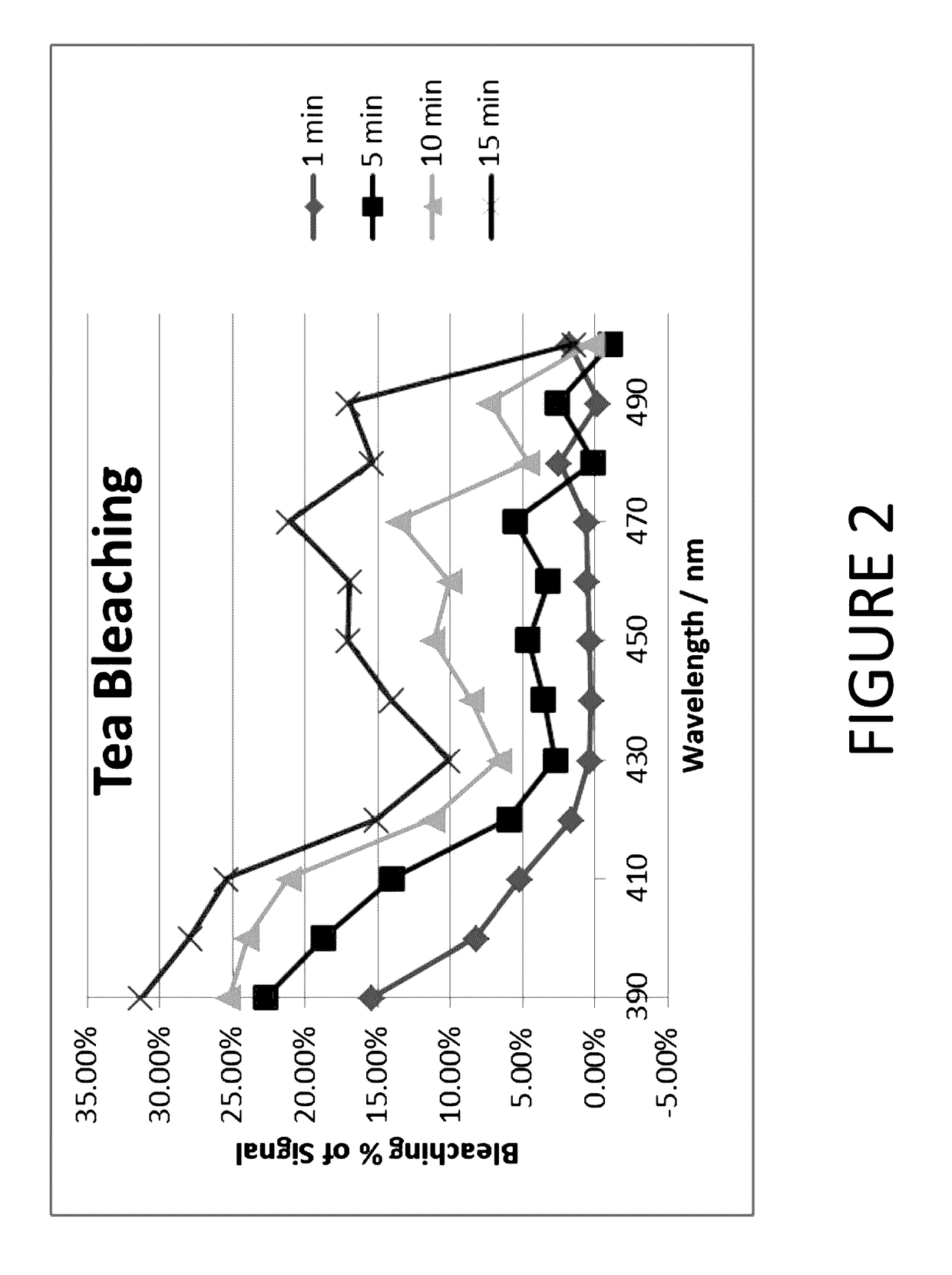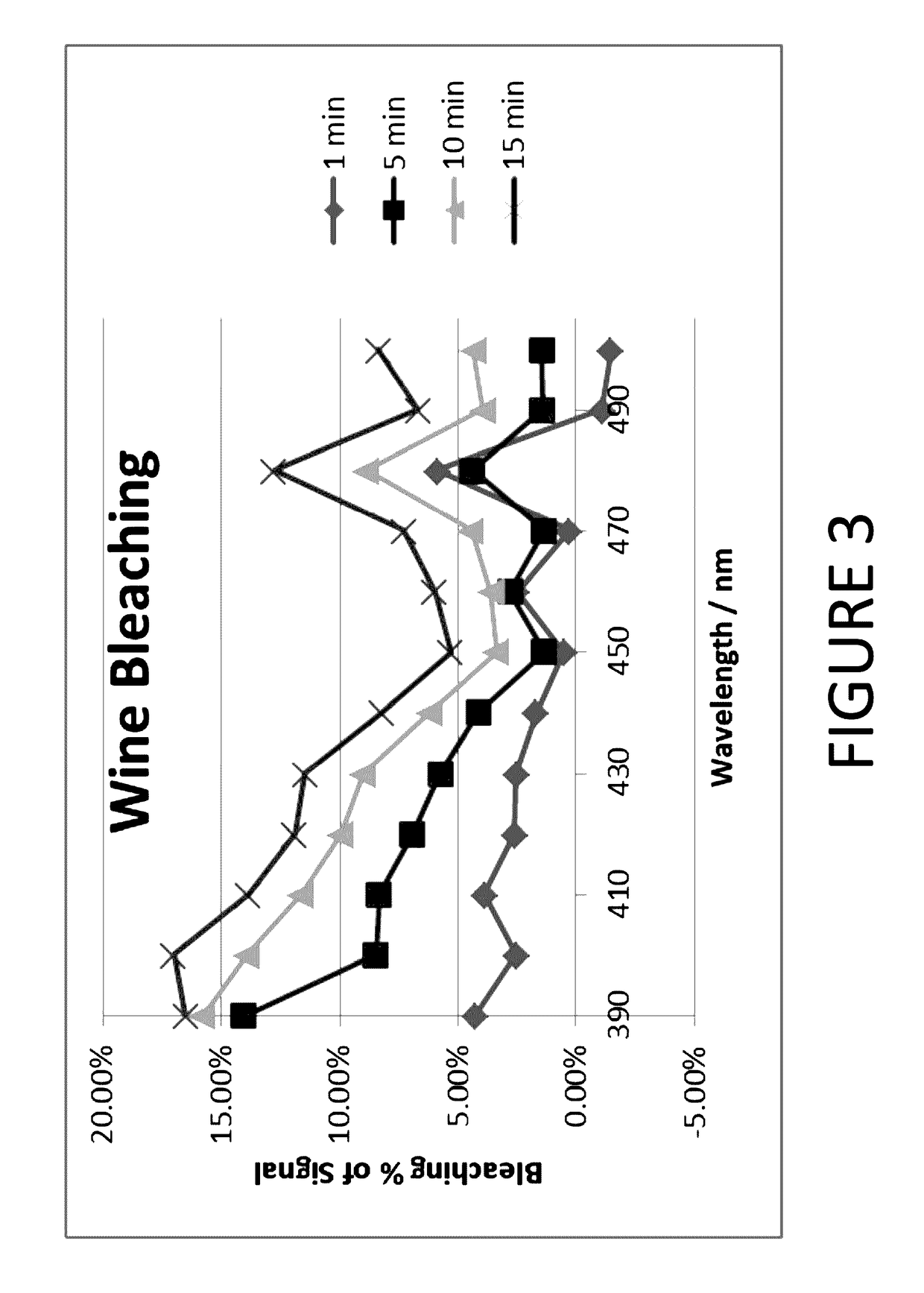Method of whitening teeth and/or altering tooth stains
- Summary
- Abstract
- Description
- Claims
- Application Information
AI Technical Summary
Benefits of technology
Problems solved by technology
Method used
Image
Examples
example 1
[0056]Example 1 includes whitening bovine teeth according to the whitening method of the present invention. Specifically, the bovine teeth were whitened according to a plurality of whitening treatments—each treatment included a whitening agent comprising 4.5 wt. % of H2O2 and irradiating a tooth surface with light from an LED for a period of 15 minutes, wherein the light at the surface of the LED had a irradiance density of 4 mW / cm2. The light included a plurality of wavelengths (λ).
TABLE 1Treatment No (λ) (λ) (λ) (λ) (λ) #Light375 nm405 nm420 nm470 nm505 nm1−2.02−4.14−5.44−2.27−3.23−1.912−2.91−5.73−6.87−3.96−4.83−2.463−3.64−7.12−8.68−5.07−6.09−3.334−4.30−7.94−9.90−6.37−6.60−3.955−4.71−9.24−10.72−6.73−7.17−4.616−5.18−9.88−11.57−7.04−8.03−5.277−5.64−10.16−11.90−7.73−8.62−5.58
[0057]As demonstrated by Table 1, whitening treatment using a combination of H2O2 and light from the LED resulted in superior whitening of the bovine teeth as compared to whitening treatment with H2O2 without lig...
example 2
[0058]Example 2 demonstrates the difference in irradiance density for whitening treatment. Specifically, bovine teeth were whitened according to a plurality of whitening treatments—each treatment included a whitening agent comprising 4.5 wt. % of H2O2 and irradiating a tooth with light from an LED for a period of 15 minutes, wherein the light having a wavelength of 405 nm. The light included a plurality of irradiance densities (mW / cm2).
TABLE 3TreatmentNo0.34 mW / #Lightcm21.6 mW / cm24.1 mW / cm28.1 mW / cm21−2.1−3.0−3.8−5.8−4.42−2.9−4.0−5.7−7.0−9.13−3.8−4.4−6.4−8.8−10.04−4.4−5.1−7.7−10.0−12.55−4.9−6.0−8.4−10.7−12.46−5.8−6.8−8.8−11.8−12.57−5.9−7.1−9.2−12.0−12.6
[0059]As demonstrated by Table 3, whitening treatment using a combination of H2O2 and light from the LED at a wavelength of 405 nm can achieve optimal whitening at irradiance densities as low as about 4 mW / cm2. Furthermore, using a irradiance density of about 8 mW / cm2 allows the user to achieve optimal whitening with fewer treatments ...
example 3
[0060]Example 3 demonstrates the difference in irradiance density of the light emitted from the LED as well as H2O2(HP) concentration of the whitening agent. However, for the purposes of the following examples, the ΔW values have been multiplied by negative one (−1), thereby resulting in a positive value for increases in whiteness. Bovine teeth were whitened according to a plurality of whitening treatments—each treatment included a whitening agent and irradiating a tooth with light from an LED for a irradiation time period of 10 minutes, and the light emitted from the LED having a wavelength of 410 nm.
TABLE 41234567893 wt. % HP (5 mW / cm2)3.446.158.4310.2911.6012.8913.9214.5515.193 wt. % HP (10 mW / cm2)5.839.4412.2614.0214.7815.48———6 wt. % HP (No Light)2.023.534.705.456.166.887.688.188.806 wt. % HP (10 mW / cm2)6.5810.6612.9414.2115.1715.6816.1016.6116.759 wt. % HP (No Light)2.403.995.256.407.248.379.399.8610.719 wt. % HP (8 mW / cm2)7.7712.4215.0116.2917.0317.7718.3318.5918.96
[0061]As d...
PUM
 Login to View More
Login to View More Abstract
Description
Claims
Application Information
 Login to View More
Login to View More - R&D
- Intellectual Property
- Life Sciences
- Materials
- Tech Scout
- Unparalleled Data Quality
- Higher Quality Content
- 60% Fewer Hallucinations
Browse by: Latest US Patents, China's latest patents, Technical Efficacy Thesaurus, Application Domain, Technology Topic, Popular Technical Reports.
© 2025 PatSnap. All rights reserved.Legal|Privacy policy|Modern Slavery Act Transparency Statement|Sitemap|About US| Contact US: help@patsnap.com



